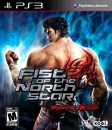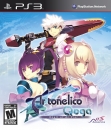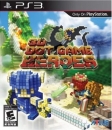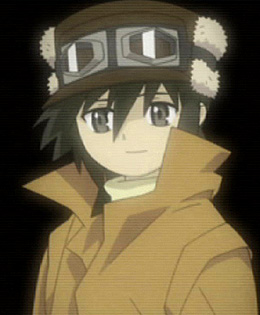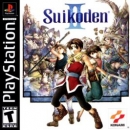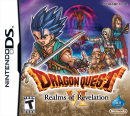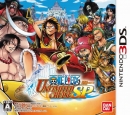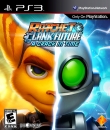I know many people here would argue that JRPGs don't need fixing, but here is IGNs article that speaks to the contrary.
http://wii.ign.com/articles/106/1060145p1.html
----------------------------------------------------------------------------------------------------
January 11, 2010 - The Japanese role-playing game (JRPG) has been part of the videogame tradition for many years. Some of our earliest gaming memories involve such names as Dragon Warrior, Final Fantasy, Phantasy Star and Lunar. But Japanese game developers certainly weren't the first or last developers to work on RPGs. Western studios have tackled similar projects and the Western RPG has risen to immense prominence recently with such games as Mass Effect and Fallout 3. In fact, many have argued that U.S. development studios have grown with the hardware technology and have implemented gameplay evolutions as well as graphical ones. But Japanese developers have been less enthusiastic to abandon tradition.
If you've played a JRPG recently, you might have noticed that some games still conform to the standards that were acceptable on consoles that are now two or three generations old. We're here to fix that.
Don't be mistaken: we love JRPGs -- we want them to do well. But when games on the PS3 and 360 are following Super Nintendo rules, something just has to change. Let's take a look at the top ten fixes to save the JRPG legacy, without losing that special something that makes them unique.
10.) People Live Here?

Could you imagine living in the world of a JRPG? People only have one thing to say. Everything looks sterile and static. Nobody moves much, nor do they care if you ruffle through their houses or crates. There are only a couple of open stores that have anything for sale, and for some reason those goods have a higher price the further away from home you get.
One of the great successes of Bethesda's games, like The Elder Scrolls franchise and Fallout 3, is that the worlds feel alive. They look like they've been lived in. The people act like they have real priorities. They react to each other, but -- more importantly -- they react to you.
We don't need the towns to be redesigned to mimic Western role-playing games. If they did, some of the charm of JRPGs would be lost. It is high time, however, that the towns in JRPGs get an upgrade.
Recent Culprit: Blue Dragon
9.) The Only Good Filler is Jelly in Donuts

You've almost saved the world from certain doom. All that's left to do is to run through this last dungeon and confront the ultimate evil. But first, you and your party of unlikely heroes must fight every boss you faced in the previous 50 hours worth of gaming... again.
There are easy ways to add 10 or 20 hours to a role-playing experience. Recycle fights or dungeons. Make the party grind its way up to some arbitrary level before the player can win. Force the character to backtrack across fields full of random battle encounters. We call these things "filler" and they have no place in a JRPG. Nobody remembers them. Nobody enjoys them. Nobody looks forward to them. The only thing they really can do is turn a player away from the genre.
Recent Culprit: The Last Remnant
8.) Invest in Presentation

Any gamer familiar with the JRPG will immediately recognize what we like to call the "talking cardboard cutout." This classic mechanic superimposes character portraits onto the screen and displays a dialogue box underneath, which effectively eliminates the need for developers to animate sprites or character models. This technique is getting old fast. With Western RPGs implementing fully animated, interactive dialogue sequences (see Mass Effect and Dragon Age), players have come to expect more production value when dealing with an RPG storyline. Developers can't cut corners anymore.
If budget is a concern and a studio can't afford to present every section of dialogue in a cinematic fashion, why not come up with a unique way of telling the story? The talking cardboard cutout isn't a necessity -- it's a crutch.
Recent Culprit: Disgaea 3: Absence of Justice
7.) The Road Less Traveled

One of the most important elements of the traditional JRPG was exploring the world map. After all, there was nothing quite as liberating as acquiring the key to your very first airship and taking to the skies, flying over vast oceans and sprawling mountains with an entire world to explore.
Although some JRPGs still attempt to keep this broad structure, many have been tragically limited. Players will often be nudged from Point A to Point B with almost no freedom to explore. Japanese developers need only look at the popularity of games like Fallout 3 to see that open worlds are greatly appreciated by gamers. Yes, a JRPG can still have a linear story, but that linear quality needn't extend into the gameplay
Recent Culprit: Eternal Sonata
6.) Cliches are for Chumps

An unfortunate habit of Japanese developers is to stick with recognizable archetypes for character designs. The lone swordsman. The charming female magic user. The mildly frustrating -- but still lovable -- little kid. The bird-dude that uses a poison mace and keeps a smaller bird-dude as an adorable pet. We've seen them all before and we want something new.
Let's not mistake this for a general dislike towards anime-style designs -- quite the contrary. We love anime and we love the Japanese aesthetic, but developers need to shake things up a bit and give us characters that we haven't seen before. After all, the cast of an RPG is the lifeblood of the entire game. If a player can't grow to love the characters and connect with the experience on a deeper level, we'd argue that the game has -- at least to a certain degree -- failed.
Recent Culprit: Magnacarta 2
5.) Voice Acting Approaches

You've all seen it before: a review that includes the fabled line "terrible voice acting" somewhere in the text. Many JRPGs suffer from this problem, and while this issue could be the result of a simple lack of localization funds, there's a much more troubling problem to be found: differences between U.S. and Japanese culture.
In Japanese animation, games and more, extremely childish, high-pitched voices are as common as sophisticated and comfortable toilets. But that sort of vocal styling is alien in the United States. This is not to say it doesn't work in Japan, but when an American voice actor or actress attempts to mimic that same style in a different language and culture, it just doesn't sound natural. It might require more effort in the localization process, but publishers bringing over Japanese RPGs should attempt to better adapt actual character personalities to suit a Western audience. Unless you're going to keep the Japanese voice track and subtitle it (which is an absolutely welcome option), some changes need to be made.
Recent Culprit: Enchanted Arms
4.) I Feel So Alone

Games like Diablo and the recently released Borderlands have shown us that gamers love playing online with others. Even more telling than the success of those titles is the rabid popularity of MMOs and the now household recognition that World of Warcraft so readily enjoys. JRPGs need to learn from these design philosophies and incorporate online elements.
The upcoming PS3 exclusive, White Knight Chronicles, is a perfect example of a JRPG that is trying to capitalize on the popularity of online gaming. The game not only has a full single-player campaign but it also has an online multiplayer mode for taking created characters into the battlefield with other gamers. Expanding a game's scope to include multiplayer is an excellent way to increase a game's replay value.
Recent Culprit: Tales of Vesperia
3.) No More Save Points

Many of us grew up with Japanese role-playing games and have heads filled with happy memories of staying up all night to best a particular dungeon or grind our way towards victory. Along the way... we grew up. Carefree youth filled with lazy summers and nothing more than a book report to distract has given way to lives with actual responsibilities.
While a four hour dungeon with no option to save may have been OK once, and maybe even added to the tension, it isn't anymore. We need to be able to start and stop our gaming at our leisure. We need to be able to walk away from a game and not have to leave a system running (Think of the environment!) for fear of losing hours worth of progress.
Let us save our game whenever we want. Then toss in some checkpoints for good measure, just in case we forget to make use of that liberty.
Recent Culprit: Star Ocean: The Last Hope
2.) Write a New Story, Mkay?

How many times have we filled the shoes of a lonely teenager from a small village? How many times has that village been attacked by a wandering group of bandits? How many times has your videogame father, in his final moments of life, whispered to you that you are in fact the promised one, destined to bring Order, Life and Beauty to a world besieged by the never-ending waves of darkness?
Not all JRPGs follow the stereotypical plots we've grown a little too accustomed to (the Persona series shows us that the Japanese can get real creative in that department), but we want some innovation when it comes to storytelling. After all, an RPG's story is one of its fundamental selling points -- why recycle such precious material when it could make the game shine? Let's have an RPG revolve around a mother searching for her child, or perhaps a ghost investigating his own death. We came up with those ideas in 15 seconds, okay? Surely JRPG developers can do better!
Recent Culprit: Crisis Core: Final Fantasy VII
1.) Battle Systems: Kick It Up a Notch

Although story, characters and musical scores are all extremely important elements to the JRPG equation, the absolute heart of the experience lies in the battle system. Players will spend most of their play time fighting all sorts of monsters and villains, so that battle system needs to be finely tuned and fun. Unfortunately, a number of JRPGs have relied heavily on the now dry tradition of the simple "Attack, Magic, Item, Defend" dynamic that we've seen for decades. This just doesn't cut it.
A good battle system needs a good hook -- something to set it apart from its peers. Think Final Fantasy VI's Magicite or Breath of Fire's dragon transformations. A JRPG needs to make battles so fun, you're eager to encounter another enemy. It's been a long time since we've felt that way.
Recent Culprit: Spectral Force 3
-----------------------------------------------------------------
I will agree that many of their points do have merit, especially the last one. What do you guys think?





































